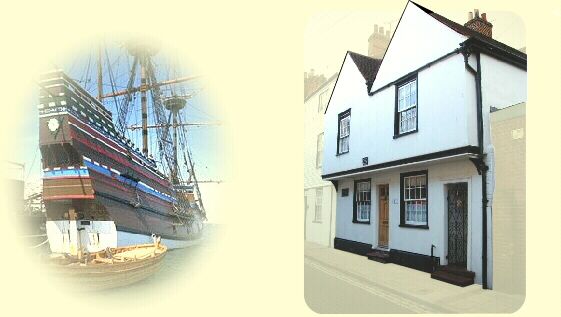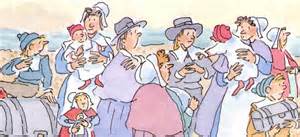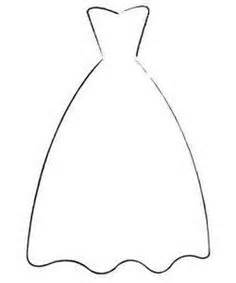
Salty Sam’s Fun Blog for Children
Number 223
The Mayflower
Hello Everyone

On the south bank of the River Thames in Rotherhithe, London, there is a famous public house called the Mayflower. Stepping into it is like going back 400 years in time – to the 16th century.
lt is famous because it was the boarding point, in July 1620, for some of the pilgrims who went off to set up a colony on the eastern shore of North America. They had come down south to London from different Villages to meet the ship after arranging the trip with some English investors.
The ship that the Pilgrim Fathers, as we call them today, boarded here was called the Mayflower.
The Mayflower was under the command of Captain Christopher Jones. Both were from Harwich in Essex and neither had sailed across the Atlantic before.
The ship sailed down the Thames and then along the south coast where it dropped anchor in Southampton Water. Here it waited for another ship to join it with more people from an English congregation living in Holland.
This ship was called the Speedwell.
The two ships set off together but the Speedwell sprang a leak and the two ships had to call in at Dartmouth, in Devon, for repairs.
But after setting out again, and more than 200 miles away from England the Speedwell started to leak once more because of a loose board. lt is unsure whether the leak was an accident, or sabotage by crewmembers who were frightened of facing the long voyage or possible starvation in America.
But the Mayflower had no option but to carry on alone, and the rest, as they say, is history.
The Mayflower, carrying 102 passengers and a crew to sail the ship, left England from Plymouth on the south west coast in 1620. The ship then possibly stopped at Newlyn in Cornwall to take aboard fresh water before it set sail again.
She was an old, merchant ship, armed with cannons in case of pirate attack, and facing strong winds and September storms took more than two months to cross the Atlantic.
ln one storm, the ship was badly damaged when a beam cracked and a passenger called John Howland was washed overboard. Luckily, he managed to grab a rope that was trailing in the water and was pulled back on board!
The beam was repaired with a huge metal screw that the settlers were carrying – this might have been a screw from a cider press or a tool used for holding planks during the construction of a building.
The ship was only about 100 feet long and 25 feet across at its widest point, the ceilings in the cabins were only about 5 feet above the floor, so conditions on board must have been very cramped and uncomfortable. But the passengers were very determined in their quest for a new life.
They spent their time reading and playing cards by candlelight. The meals were cooked for a group of people at a time on a firebox. This was a fire built on top of sand spread onto an iron tray – a risky thing to do on a wooden ship.
Below the gun deck was the cargo hold where the passengers stored all of the food and beer (stored in barrels called hogsheads) they would need for the voyage. There was also all the clothes, shoes, bedding, tools, utensils and muskets (16th century guns) that they would need in their new homes.
They took with them: dogs, sheep, goats and poultry as well as two smaller boats (partially dismantled to fit on the ship) that could be powered by oars or sails. Family pets like cats and birds were also taken, but horses and cattle were to be brought over later.
The unfortunate delays at the beginning of the voyage had caused provisions to run down lower than the passengers had anticipated. There was a lack of fresh fruit and vegetables (they couldn’t be stored because they would have rotted) and the voyage was long and arduous.
Some families were on board together but some men travelled alone leaving their families back in England and Holland.
Some passengers were farmers recruited by London Merchants hoping to make money from new businesses abroad and some of the passengers wanted to leave England because they wanted to live in another place. These were called separatists. They held protestant, religious views that were first set up by a man called John Calvin. They wanted to live separately from the English State Church (The Church of England), unlike most Puritans of the time, but they did not want to lose their English cultural identity.
Some had set up a colony in Holland which was also a Protestant country at the time, but they feared they would lose their original identity if they stayed. So these separatists had the idea of setting up a colony in America. For Europeans it seemed like a new country – but of course for the Native Americans it wasn’t.
The passengers were all heading for the Colony of Virginia.
When land was sighted on 9th November, it was Cape Cod – within the New England territory; but not Virginia. This area is in what is now called Massachusetts and is further to the north.
Two people died on the journey and two babies were born.
One was born at sea and was named Oceanus.
The other was born when the ship reached harbour and was named Peregrine. He was the first European child to be born in this area.
The Mayflower arrived in the Cape Cod Fishhook on 11th November. (lf you look at the picture in the Picture Gallery, you will be able to see how this bay got its name!)
But the settlers were to face hardship and a tough fight for survival in their new life.
They planned to set up home in New England but were hit by harsh, winter weather. The New England winters were much more bitterly cold than the winters back in England. Snow had already fallen when they arrived at the beginning of November. Almost half the settlers were to die that first winter.
During this winter, the passengers remained on board the ship, but disease soon broke out. lt was described as a mixture of scurvy (caused by a lack of vitamin C because they had no fruit and vegetables), pneumonia and tuberculosis (lung diseases).
When it ended, only 53 passengers and half the crew were still alive.
ln the spring, the settlers built huts to live in, in the architectural style of those they would have known back in England, and on 21st March, 1621, the surviving passengers left the Mayflower for the last time.
The ship that had been in New Plymouth Harbor all through that savage winter could not return until the sailors on board who had been ill were fully recovered.
The ship’s hold that had carried the settlers’ possessions was now empty, so had to be filled with ballast. The sailors used stones picked up from the harbour shore. The weight of the stones would give the ship stability as she sailed back across the ocean.
On April 5th, The Mayflower set sail for England.
The west winds that had made the journey to America so difficult pushed the ship homewards. The journey back took less than half the time of the outward voyage.
She returned to London on 6th May, 1621.
The following year, Captain Jones died at the age of about 52 and he was buried at St Mary’s church in Rotherhithe.
A couple of years after that, the aging Mayflower was broken up.
Maybe the strain of that difficult voyage in 1620 was too much for both of them.
The Mayflower passengers were the first permanent European settlers in New England. They called themselves the ‘First Comers’.
We know about the fortunes of these early settlers because of the journal kept and the letters written by one of the organisers of the trip, William Bradford. He was later to become the governor of the Plymouth Colony in 1621.
The timbers of the ship were probably taken to be used as building materials, as was the habit of the day.
Many English houses are constructed from ‘recycled’ ships.
lt is said that the Mayflower was possibly made into a barn at Jordans village in Buckinghamshire, traditionally called the Mayflower Barn.
ln 1624, Thomas Russell supposedly added to a farmhouse using timbers of a ship bought from a ship breaker’s yard in Rotherhithe, thought to be that of the Mayflower.
Another ship, also called the Mayflower (it was a popular name for ships at the time apparently), made a voyage from London to Plymouth Colony in 1629 carrying 35 passengers. lt took over two months to arrive. Many of these people were from the Pilgrim congregation in Holland that had helped to organize the first voyage in 1620.
This same ship made four more crossings to America in the years that followed, taking passengers and more goods to the new colonies.
But in 1641, another trip was attempted with 140 passengers on board bound for Virginia – it never arrived.
Of course many, many people were to follow these early settlers across the ocean from Europe to the New World to make a new life for themselves, and each one had their own stories to tell too.
Bye bye everyone – don’t forget to subscribe to my blog!
lf you like my blog, please support it by telling all your friends and followers about it.
Thank you!
And see you again next Fun Friday!
Love and kisses
Salty Sam

www.christina-sinclair.com


Bill and Bob’s Joke of the Week![]()
![]()
Bill: lf April showers bring May flowers, what do May flowers bring?
Bob: l don’t know. lf April showers bring May flowers, what do May flowers bring?
Bill: Pilgrims!

Salty Sam © Christina Sinclair 2015
Unauthorized use and/or duplication of material from this blog without express and written permission from this blog’s author and owner is strictly prohibited.
Links may be used to www.christina-sinclair.com

Picture Gallery
 What a real mayflower looks like
What a real mayflower looks like
 Mayflowers grow on May trees and come out in May
Mayflowers grow on May trees and come out in May
They have a very sweet scent
 Captain Jones
Captain Jones
 His house in Harwich
His house in Harwich
(The Mayflower was built in Harwich)
(Harwich-society.co.uk)
 The Mayflower Memorial at Southampton
The Mayflower Memorial at Southampton
 Cape Cod Fishhook
Cape Cod Fishhook
 A model of the Mayflower
A model of the Mayflower
 Mayflower barn
Mayflower barn
(petes-walk.co.uk)
 The Mayflower in Rotherhithe
The Mayflower in Rotherhithe
 The Mayflower Pub by the River Thames
The Mayflower Pub by the River Thames
 Inside the Mayflower
Inside the Mayflower


 THE SALTY SAM NEWS DESK
THE SALTY SAM NEWS DESK

Some while ago Bill and Bob planted some orange pips and I am glad to say they sprouted and grew.
Now they want to put their tiny trees into slightly larger pots – and this is about the right time of the year to repot citrus trees.
So last weekend they got busy.

They used free-draining, gritty soil in the bigger pots with some well-rotted garden compost mixed in.
They know that they need to give their plants a good soaking with water and let the water drain away and then not water them again until the compost is completely dried out.
They will give them some tomato feed as well and their little trees should be well away.
On any warm, sunny day they can be put out in the garden to soak up the sunshine but they must be well-protected when the weather is not so good.
Let’s hope one day Bill and Bob will actually have some oranges growing on their trees when they are big enough – you have to be very patient to be a good gardener.

If you don’t have any citrus trees growing in your garden, like orange, lemon or lime, you can still buy these fruits from the shop of course.
Here is a really easy-to-make recipe for a lemon cake.
NEWSDESK MINIMAKE
LEMON CAKE
Firstly, put the oven on to gas mark 3 or 160°C
Then, put a lining of silicone paper (also called baking parchment) in the bottom of two 18cm/7 inch cake tins. Not around the sides – just on the bottom will be enough.
Next, take a large mixing bowl and put the following ingredients into it.
170g/6ozes self-raising flour (sifted well)
1 level teaspoon of baking powder
170g/6ozes butter (that has been left out of the fridge a while to make it soft)
3 large eggs
170g/6ozes caster sugar
2 table spoons of lemon juice
All of this needs to be mixed very well together but if you use an electric hand mixer, make sure you keep your fingers and hair well away from the beaters. Tie your hair back, if it is long.
Divide the mixture into two and put it into the cake tins.
Put them in the pre-heated oven and bake for 35 minutes.
While the cake is cooking you can make a butter-cream filling to go in the middle of your cake and another icing to top it.
But you must let the cake cool before you put icing on it.
And of course don’t forget to carefully peel the silicone paper off too once the cake has cooled down.

ICING FOR BETWEEN THE SPONGES
100g/4ozes butter (softened)
225g/9ozes icing sugar
2 table spoons lemon juice
ICING TO POUR ON THE TOP
50g/2ozes icing sugar
1 ½ tablespoons lemon juice
You can make your own lemon juice by squeezing lemons (don’t forget to take the pips out of the juice) or buy it in a bottle.
You could add yellow food colouring to the butter icing if you would like to.
You could also decorate the top with lemon zest if you like it, or squirts of cream and lemon sweets to make it extra pretty.

*********************
TO ADVERTISE ON THIS BLOG
PLEASE CONTACT:
christina.sinclair.ads@aol.co.uk
*********************


Quick Quiz
Sometimes things from the past reappear with a new sense of meaning to them.
Do you know where these come from originally?
1.

2.
Jeeves
3.
Bluetooth




lt’s the Weekend!

HOW TO MAKE A BALLGOWN FOR A 12” DOLL
This luxurious dress looks lovely made up in a dark-coloured yarn with a metallic thread in it.

BALL GOWN BODICE (KNIT ONE)
Using 4mm knitting needles and rich purple dk yarn cast on 25 stitches
Knit 32 rows of garter stitch
Cast off
Sew up back seam using over-sew stitching
BALL GOWN SKIRT (KNIT TWO)
Using 4mm knitting needles and rich purple dk yarn cast on 40 stitches
Knit 4 rows of garter stitch
Knit 10 rows of stocking stitch
Decrease 1 stitch at the beginning of the next 2 rows of stocking stitch
Knit 10 rows of stocking stitch
Decrease 1 stitch at the beginning of the next 2 rows of stocking stitch
Knit 4 rows of stocking stitch
Decrease 1 stitch at the beginning of the next 2 rows of stocking stitch
Knit 4 rows of stocking stitch
Decrease 1 stitch at the beginning of the next 2 rows of stocking stitch
Knit 4 rows of stocking stitch
Decrease 1 stitch at the beginning of the next 2 rows of stocking stitch
Knit 4 rows of stocking stitch
Decrease 1 stitch at the beginning of the next 2 rows of stocking stitch
Knit 1 row
Knit 1 row
Knit 1 row
Knit 1 row
Cast off
TO MAKE UP
Sew up the side seams using over-sew stitching and right sides together
Crochet 100 chains into a length of yarn and thread this through the waistband of the skirt
The bow can be put at the front or the back of the skirt
Put the odice on the doll and slip the skirt over the top
Pull the cord tight to gather the skirt around the waist and tie the cord into a bow
EVENING BAG (KNIT ONE)
Using 4mm knitting needles and purple yarn cast on 8 stitches
Knit 2 rows of garter stitch
Knit 10 rows of stocking stitch
Knit 2 rows of garter stitch
TO MAKE UP
Sew up side seams using over-sew stitching and right sides together.
Leave a length of yarn looped at the top to create a little handle.
Turn the bag right side out.

Please note that the material on this blog is for personal use and for use in classrooms only.
It is a copyright infringement and, therefore, illegal under international law to sell items made with these patterns.
Use of the toys and projects is at your own risk.
©Christina Sinclair Designs 2015


Quick Quiz Answers
- This symbol might mean save on your computer but it represents a way of storing files that is mostly not used any more. This is a picture of a floppy disc – a USB stick can hold a much greater amount of information on it.
- Jeeves is a character from fiction. The books about Bertie Wooster and his constant companion, an enormously clever valet (a personal servant for a man) called Jeeves, were written by an author called P. G. Wodehouse (pronounced Woodhouse). Jeeves’ plans often get Bertie out of trouble. The books are very funny.
- The word Bluetooth comes from the name of a king that unified Norway and Denmark. King Harald was king of Denmark and Norway and was probably born around 935 AD. He was maybe nicknamed Bluetooth because he had an obvious dark (or bad) tooth.

(By Briangotts – Own work, CC BY-SA 3.0,
https://commons.wikimedia.org/w/index.php?curid=6028459)





An interesting story, well told.
Thank you for writing in Anita!
Muchas gracias.
Thank you.
You’re welcome.
Great website! I am loving it!! Will be back later to read some more.
Thank you – see you again soon. 🙂